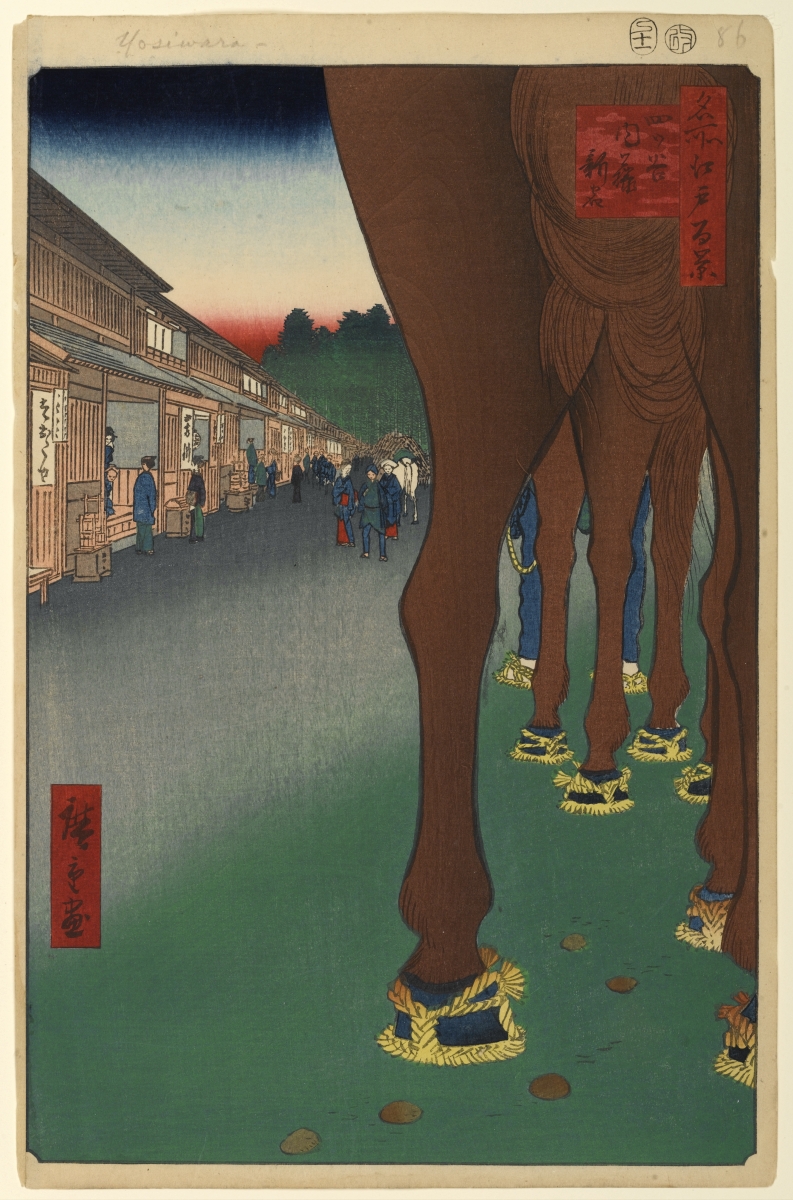Ando Hiroshige, Maple Leaves and the Tekona Shrine and Bridge at Mama, 1856-9
Ando Hiroshige’s landscape prints often employ traditional Chinese or Japanese techniques, such as the use of mist to separate distant forms and a spatial arrangement where the nearest objects are in the lowest part of the image. However, as Matthi Forrer has written (‘The Art of Hiroshige’), when Hiroshige designed One Hundred Views of Edo (1856-8) he often used Western artists’ repoussoir device of placing large objects in the foreground. For example, in Maple Leaves and the Tekona Shrine and Bridge at Mama the view is framed by tree branches, whilst the Kinryuzan Temple at Asakusa is seen from a doorway with an overhanging lantern. However, it has to be said that the technique was not always successful. There is too much bridge in Nihon Bridge and Edo Bridge and the hanging turtle does not seem to add much to Mannen Bridge and the Fukagawa District. The presence of a large horse’s bottom and droppings in The New Station of Naito at Yotsuya are particularly unfortunate...
Ando Hiroshige, The New Station of Naito at Yotsuya, 1856-9
The links here are all to images on a beautiful website, The Woodblock Prints of Ando Hiroshige. I came upon the Hiroshige site by following a link on the excellent Pruned blog.
[These images are now more widely available, e.g. on Wikimedia Commons, so I have added two subsequently to this post]


No comments:
Post a Comment